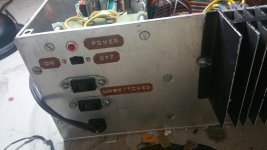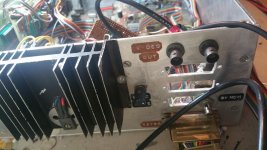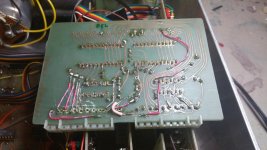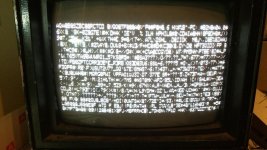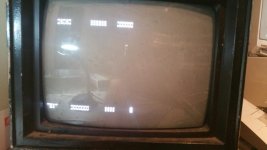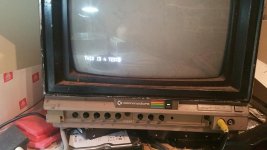falter
Veteran Member
Had the great fortune to run into a fellow on one of my yahoogroups feeds. The discussion was about my TVT project boards and he mentioned he might have something he built back in the day. Turns out he had a CT1024 terminal, built completely by himself in 1977 (he even etched his own PCBs from the plans). He offered it to me for a very (very) reasonable sum and today here it is.

It's housed in a very solid aluminum sheet casing he built. I'm not sure whose keyboard that is (haven't taken it apart yet). He also eschewed the P197 power supply my other units have (a smart call, I think).
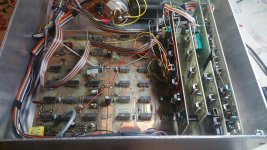
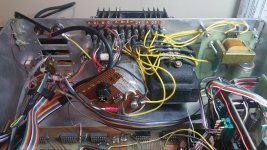

Neither myself nor the former owner know what this board is for exactly:
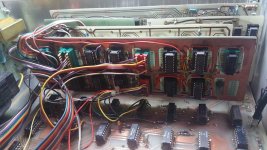
It's not an upper/lowercase switcher. It mounts directly to the memory board. I'm wondering if maybe it increases the lines to more than 32 characters.. it appears I have 64 characters across for each line.
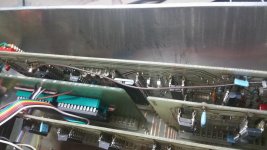
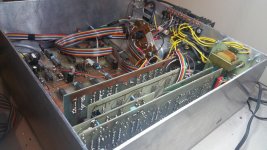

It's housed in a very solid aluminum sheet casing he built. I'm not sure whose keyboard that is (haven't taken it apart yet). He also eschewed the P197 power supply my other units have (a smart call, I think).



Neither myself nor the former owner know what this board is for exactly:

It's not an upper/lowercase switcher. It mounts directly to the memory board. I'm wondering if maybe it increases the lines to more than 32 characters.. it appears I have 64 characters across for each line.


Last edited:

